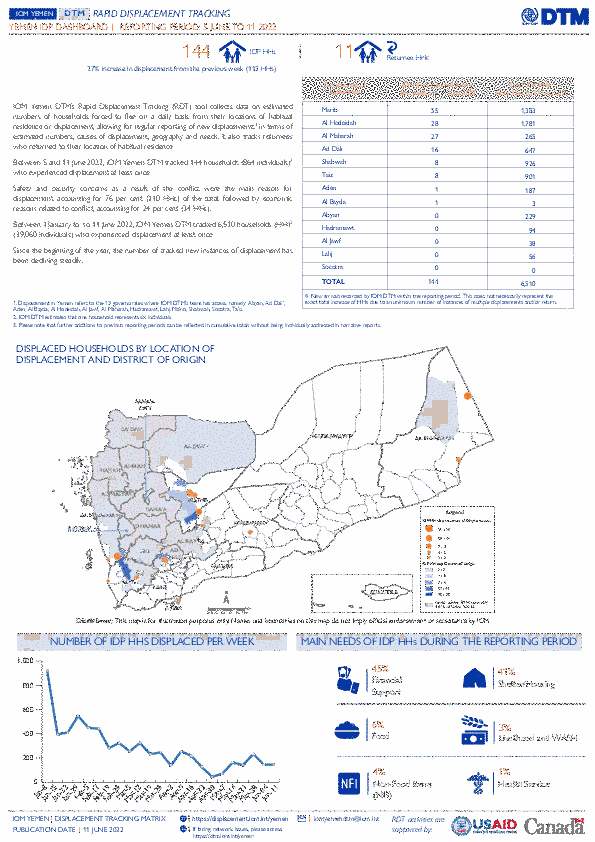-
Countries
-
Data and Analysis
-
Special Focus
-
Crisis Responses
Yemen — Rapid Displacement Tracking Update (05 June - 11 June 2022)

Contact
DTM Yemen, iomyemendtm@iom.int
Language
English
Location
Yemen
Period Covered
Jun 05 2022
Jun 11 2022
Activity
- Mobility Tracking
IOM Yemen DTM’s Rapid Displacement Tracking (RDT) tool collects data on estimated numbers of households forced to flee on a daily basis from their locations of origin or displacement, allowing for regular reporting of new displacements in terms of estimated numbers, geography, and needs. It also tracks returnees who returned to their location of origin.
From 1 January to 11 June 2022, IOM Yemen DTM tracked 6,510 households (HH) (39,060 Individuals) who experienced displacement at least once.
Between 5 and 11 June 2022, IOM Yemen DTM tracked 144 households (864 individuals) displaced at least once. The majority of people moved into/within the following governorates and districts:
- Marib (55 HHs) – Marib (23 HHs), Marib City (20 HHs), Harib (12 HHs) districts. Most displacements in the governorate originated from Marib and Dhamar.
- Al Hodeidah (28 HHs) – Hays (25 HHs), Al Khukhah (3 HHs) districts. Most displacements in the governorate originated from Al Hodeidah and Taiz.
- Al Maharah (27 HHs) – Shahin (15 HHs), Al Ghaydhah (12 HHs) districts. Most displacements in the governorate originated from Al Hodeidah and Taiz.
The majority of people moved from the following governorates and districts:
- Marib (36 HHs) – Harib (13 HHs), Raghwan (8 HHs), Al Jubah (6 HHs) districts.
- Al Hodeidah (31 HHs) – Hays (10 HHs), Jabal Ras (9 HHs), Al Hawak (4 HHs) districts.
- Taiz (22 HHs) – Maqbanah (13 HHs), Al Waziyah (3 HHs), Jabal Habashi (2 HHs) districts.
